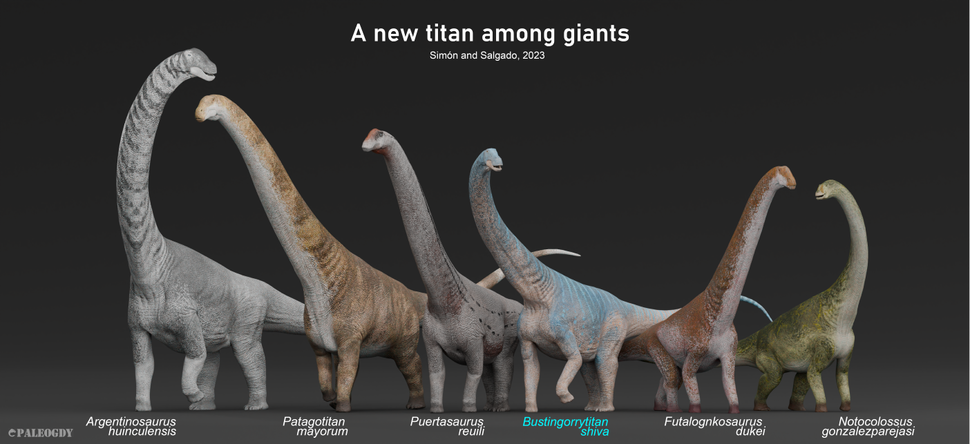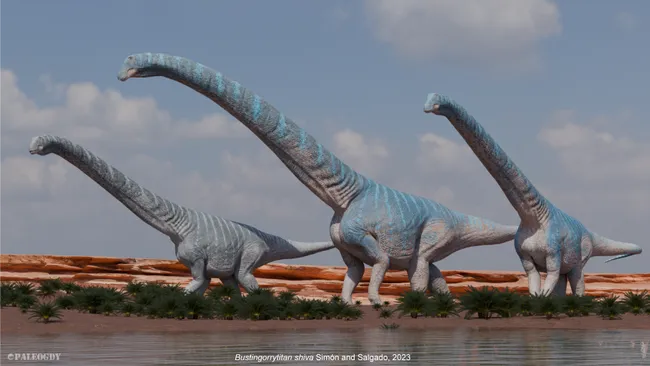Last year marked a significant milestone in paleontological discovery with the unveiling of Bustingorrytitan shiva, a monumental dinosaur that captured the imagination of scientists and enthusiasts alike. Stretching an impressive 98 feet in length, this gargantuan creature, affectionately dubbed “Shiva,” emerged from the annals of prehistory to rewrite the narrative of Earth’s ancient inhabitants.
Situated amidst the breathtaking landscapes of Argentina, Shiva’s colossal frame traversed the Cretaceous terrain over 90 million years ago, sharing its domain with an array of long-necked megatitanosaurs. Named in honor of the formidable Hindu deity known as the “Destroyer,” B. shiva embodies the sheer power and grandeur befitting its namesake.
Weighing an estimated 74 tons, B. shiva stands as a titan among sauropods, a testament to the awe-inspiring diversity of prehistoric life. Its discovery in the North Patagonia region offers a tantalizing glimpse into a bygone era, where giants roamed the land and shaped the very fabric of their ecosystem.
Led by pioneering paleontologist María Edith Simón, the excavation of B. shiva unveiled a treasure trove of fossilized remains, including a relatively complete skeleton and several other specimens. Each bone tells a story of endurance and adaptation, providing invaluable insights into the evolutionary journey of these ancient behemoths.

What sets B. shiva apart is not just its sheer size, but its evolutionary trajectory. Unlike its counterparts, Shiva’s lineage forged its path to gigantism independently, a testament to nature’s endless capacity for innovation and adaptation. The discovery of this distinct lineage highlights the complexity of prehistoric ecosystems and the myriad pathways evolution could take.
The significance of B. shiva extends beyond its immense proportions; it offers a window into the intricate web of life that thrived during the Cretaceous period. Coexisting with other titanic sauropods like Argentinosaurus, B. shiva navigated a landscape teeming with diversity, each species carving out its niche in the ecosystem.
In the naming of B. shiva, homage is paid not only to its physical stature but also to its cultural and mythological significance. Combining the name of its discoverer, Manuel Bustingorry, with the grandeur of the titans from Greek mythology, B. shiva emerges as a symbol of the enduring human quest to unravel the mysteries of our planet’s past.
As researchers continue to dissect the fossils and unravel the secrets held within, B. shiva stands as a testament to the resilience of life in the face of cataclysmic change. Its lineage survived through epochs of extinction and renewal, leaving an indelible mark on the tapestry of Earth’s history.
In the shadow of Bustingorrytitan shiva, we glimpse the majesty of a lost world, a world where giants once roamed and the boundaries of possibility were stretched to their limits. And in that glimpse, we find not just a dinosaur, but a story—an epic tale of survival, adaptation, and the enduring legacy of life itself.
